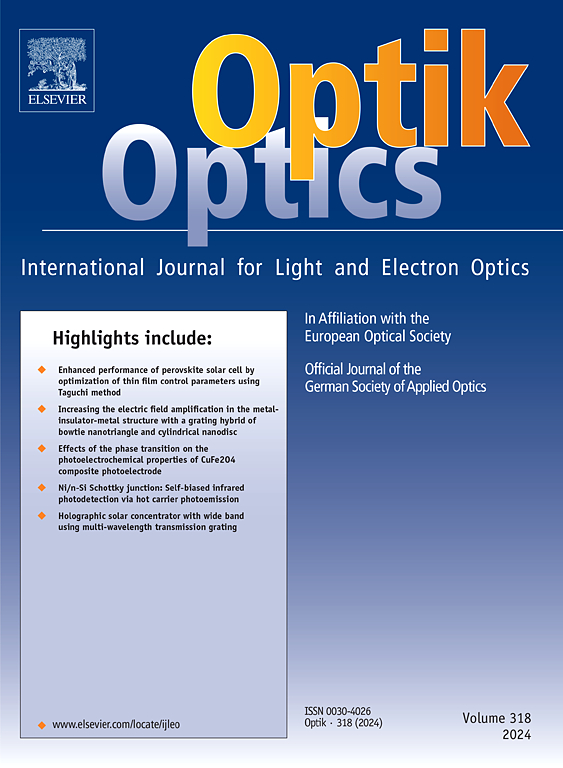Multiplexed detection of refractive indices among analytes via microfluidics and optical ring resonator: Optical coupling approach
IF 3.1
3区 物理与天体物理
Q2 Engineering
引用次数: 0
Abstract
The presented work examines the detection of multiple biological analytes associated with various diseases in humans using an optical ring resonator-based refractive index sensor. The suggested sensor has great potential in the healthcare domain for early disease diagnosis. The sensor system, utilizing a C-band (1550 nm) optical source, has been designed and numerically analyzed to detect sickle cell anemia (SCA), breast cancer cells, glucose concentrations, and tuberculosis. The time-efficient finite different time domain (FDTD) method has been employed to optimize the performance metrics of the sensor enhancing the sensitivity (), figure of merit (), and quality factor (). Apparently, the designed sensor can detect multiple analytes with nanometer/Refractive Index Unit (nm/RIU), RIU-1, and , respectively. The obtained results further motivates the fabrication of ubiquitous sensing system for multiple disease detection.
利用微流体和光环谐振器对分析物折射率的多路检测:光耦合方法
提出的工作检查检测与人类各种疾病相关的多种生物分析物使用基于光学环形谐振器的折射率传感器。该传感器在医疗保健领域的早期疾病诊断方面具有很大的潜力。该传感器系统采用c波段(1550nm)光源,设计并进行了数值分析,可用于检测镰状细胞性贫血(SCA)、乳腺癌细胞、葡萄糖浓度和结核病。采用时域有限差分法(FDTD)优化传感器的性能指标,提高了传感器的灵敏度(S)、品质系数(FOM)和质量因子(QF)。显然,所设计的传感器可以检测多种分析物,S=420.45纳米/折射率单位(nm/RIU), FOM=289.85 RIU-1, QF=1107.36。研究结果进一步推动了多疾病检测泛在传感系统的研制。
本文章由计算机程序翻译,如有差异,请以英文原文为准。
求助全文
约1分钟内获得全文
求助全文
来源期刊

Optik
物理-光学
CiteScore
6.90
自引率
12.90%
发文量
1471
审稿时长
46 days
期刊介绍:
Optik publishes articles on all subjects related to light and electron optics and offers a survey on the state of research and technical development within the following fields:
Optics:
-Optics design, geometrical and beam optics, wave optics-
Optical and micro-optical components, diffractive optics, devices and systems-
Photoelectric and optoelectronic devices-
Optical properties of materials, nonlinear optics, wave propagation and transmission in homogeneous and inhomogeneous materials-
Information optics, image formation and processing, holographic techniques, microscopes and spectrometer techniques, and image analysis-
Optical testing and measuring techniques-
Optical communication and computing-
Physiological optics-
As well as other related topics.
 求助内容:
求助内容: 应助结果提醒方式:
应助结果提醒方式:


